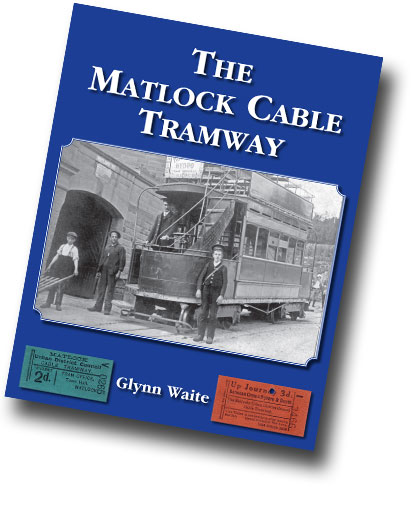Click here to download an order form for payments by cheque (UK customers only). Home | Railway History | Local History | Staffordshire Bull Terriers | Literary Drinkers Please request a quote for multiple purchases to benefit from reduced postage! |
|
The idea of a cable tramway in Matlock goes back to the late 1860s when Job Smith, a former employee at John Smedley’s hydro, is said to have seen some early lines in San Francisco and felt that such a system would be suited to Matlock. However, it was March 1893 before the tramway was opened, and then it only extending for half a mile, albeit over a route, that at one time made it the steepest cable tramway in the world. It is doubtful if even this modest line would have been built had it not been for the finance of George Newnes of Tit Bits fame, who originated from the area. Perhaps Newnes realised that the tramway would not be as successful as had originally been envisaged, for in 1898 he bought out his fellow shareholders and donated it to Matlock Urban District Council. The Council took over the undertaking with great enthusiasm, even examining possible schemes for extensions, but soon realised that while it attracted many tourists during the spring and summer, it rarely covered its direct operating costs in the autumn and winter months. On top of this there were always costs of materials, especially new cables, which were changed quite frequently. Nevertheless, until 1910 it made a profit in all but three of the years. Thereafter it started to make annual losses with the Council subsidising the undertaking from its general account. Nevertheless, it continued operating throughout the year until September 1927 despite a loss of £2,755 in 1921 when post-war inflation was at its peak, and ones in excess of 1,000 in four other years. To some extent what happened was outside the control of the Council, the cost of materials rising considerably more than it was reasonably possible to increase fares, which themselves doubled during this period. Glynn Waite, who first took an interest in the concern when living at his birthplace of Cromford, has researched the tramway in considerable detail, in some cases dispelling information that has been repeated over the years. The book extends to 160 pages, and includes over 150 photographs and 85 other images / diagrams. There are 10 chapters: 1. The Story of the Tramway (which takes up 55 pages) In addition, there are 16 appendices covering a variety of subjects, and 5 pages showing the tramway today. Copies of the book may also be obtained from the author - Glynn Waite, 113 Green Oak Road, Totley, Sheffield. S17 4FS. Email Glynn.Waite (at) btinternet.com |


 The Matlock Cable Tramway
: ISBN 978-0-9562706-5-8
The Matlock Cable Tramway
: ISBN 978-0-9562706-5-8